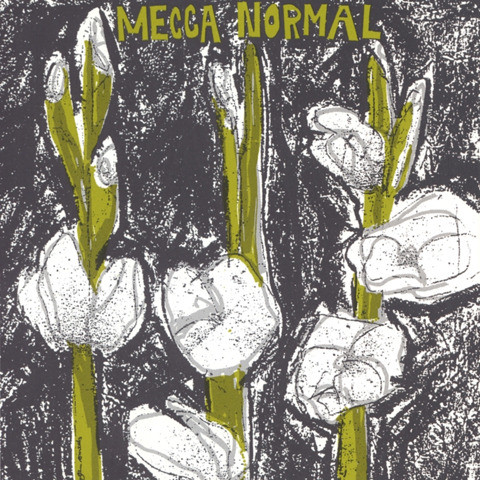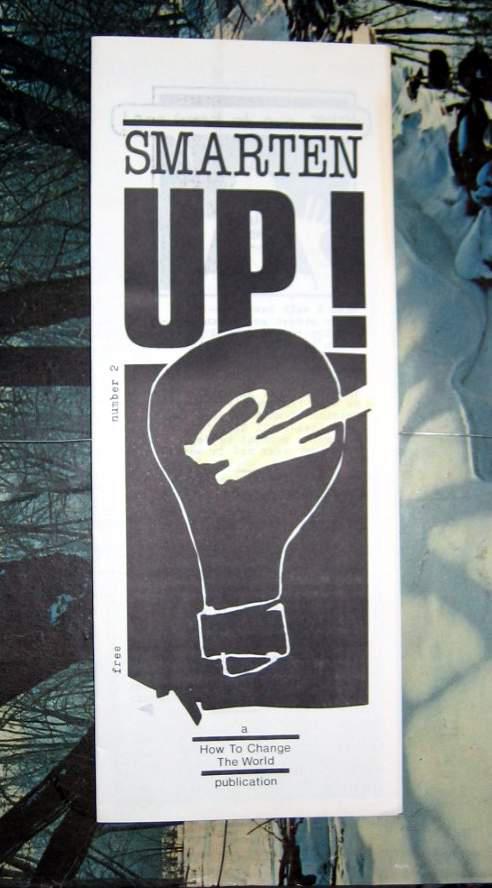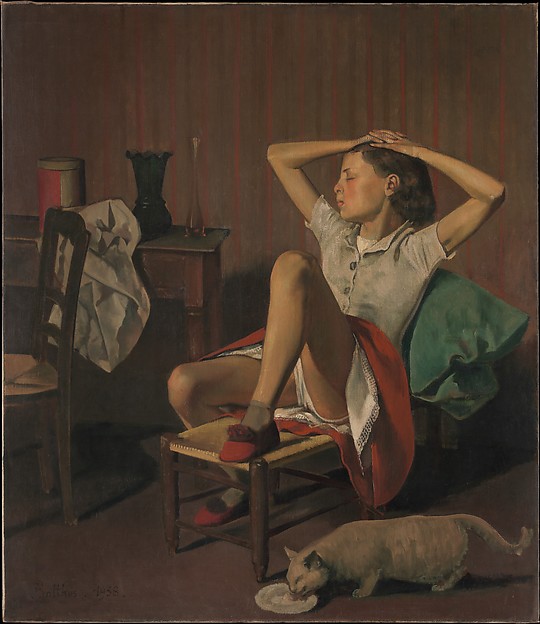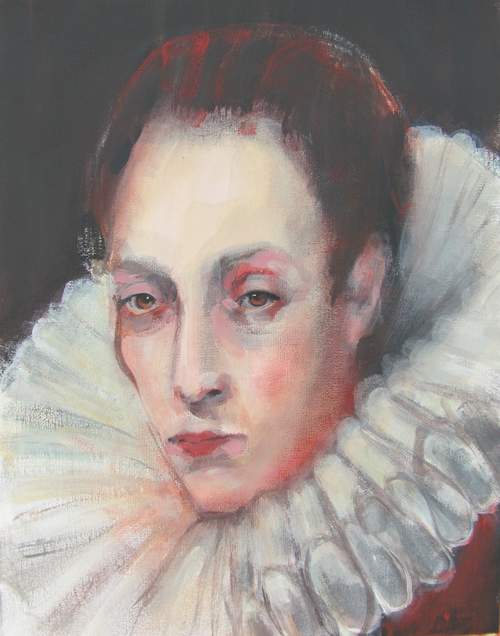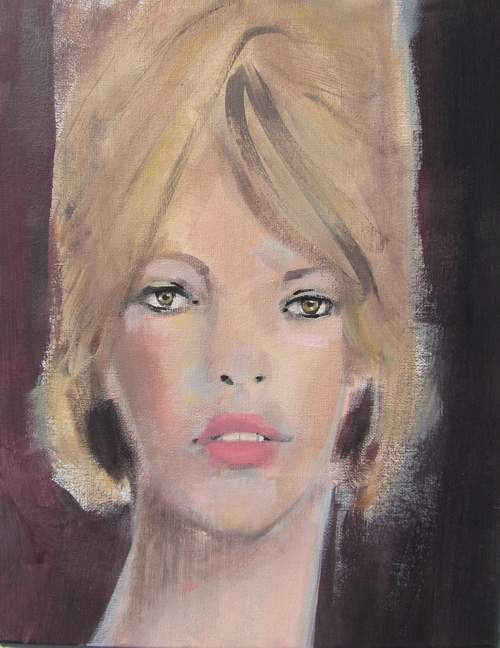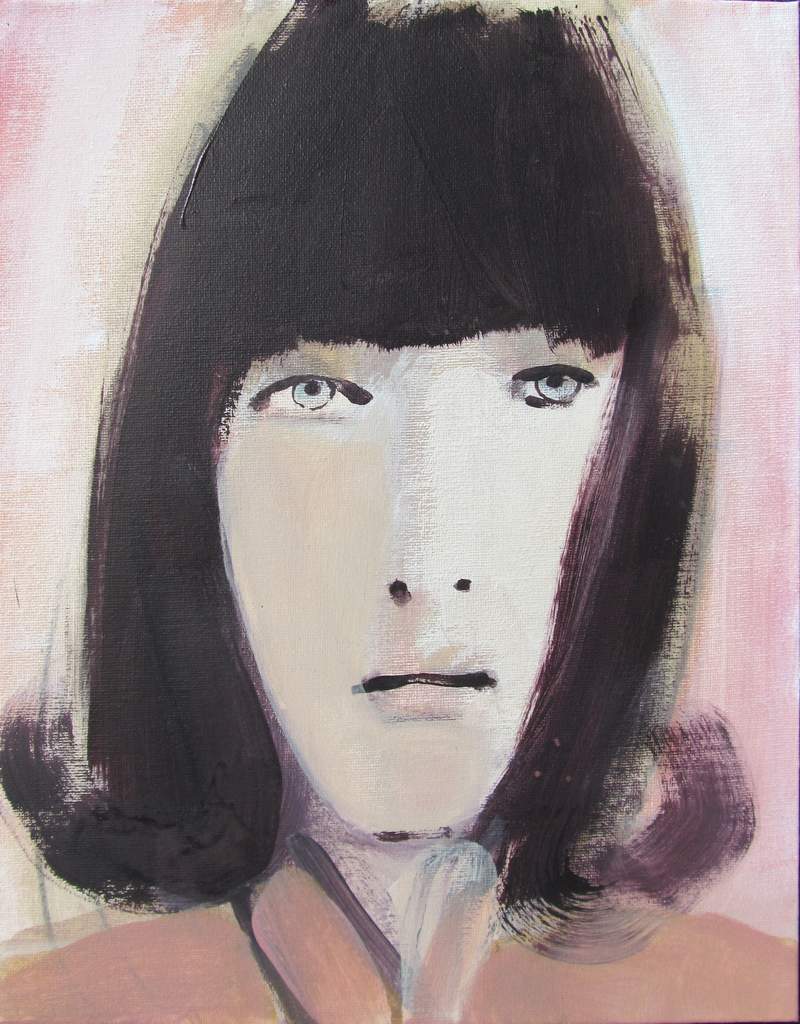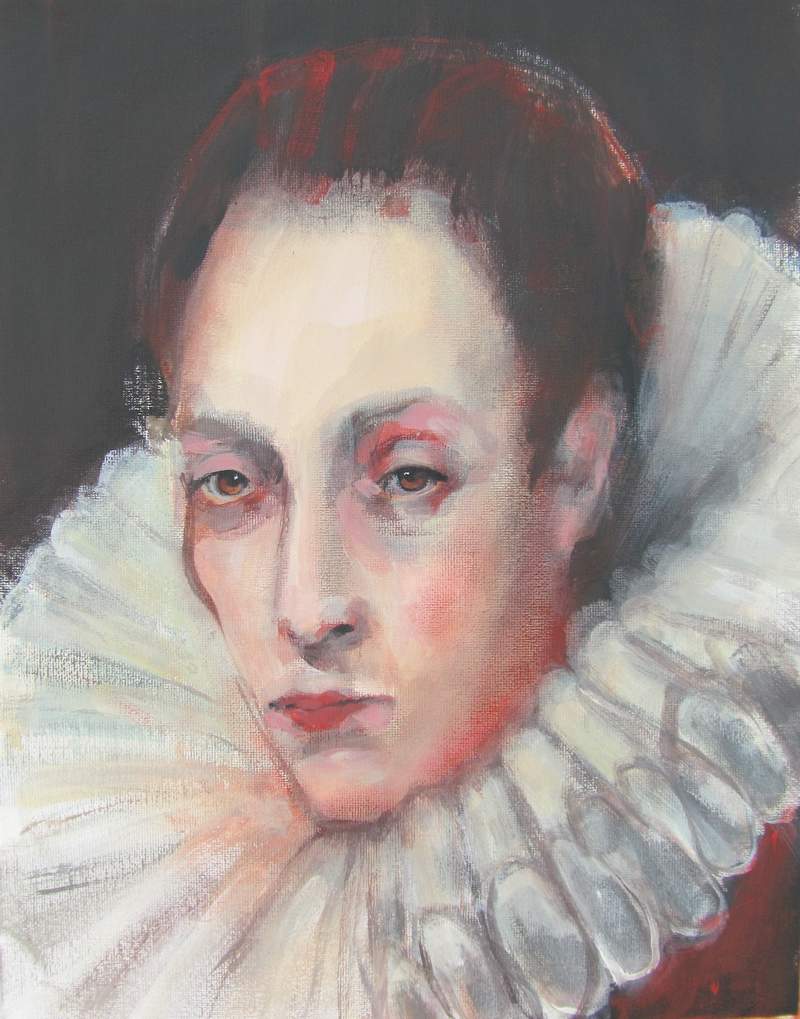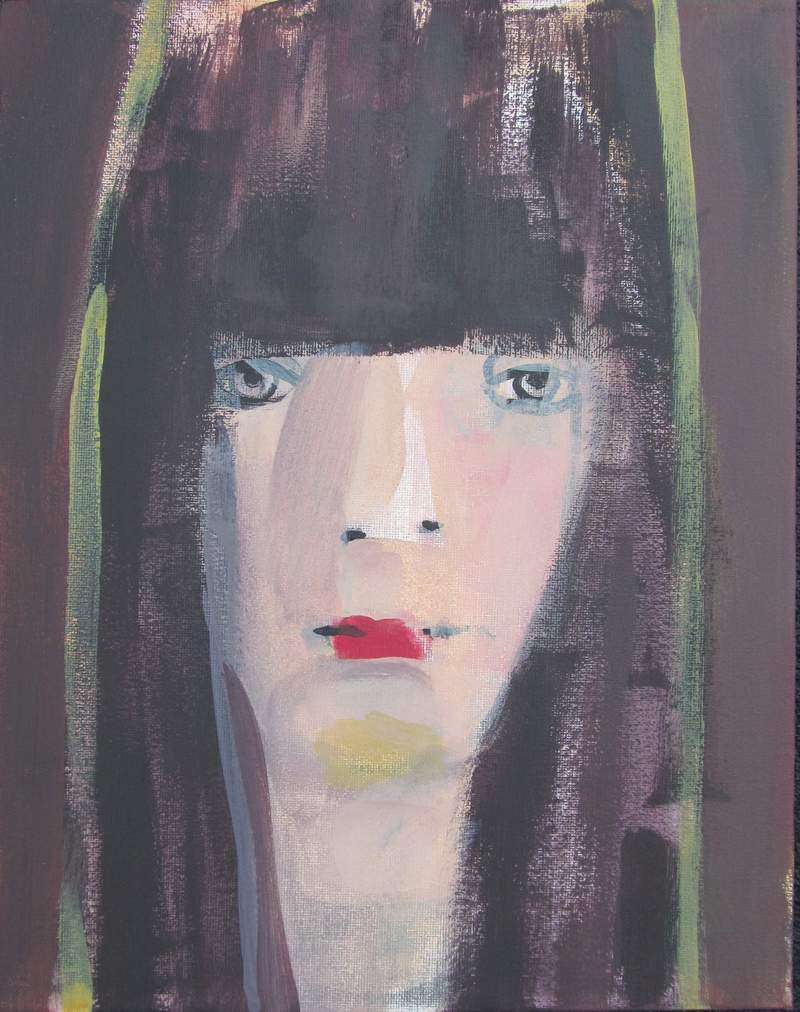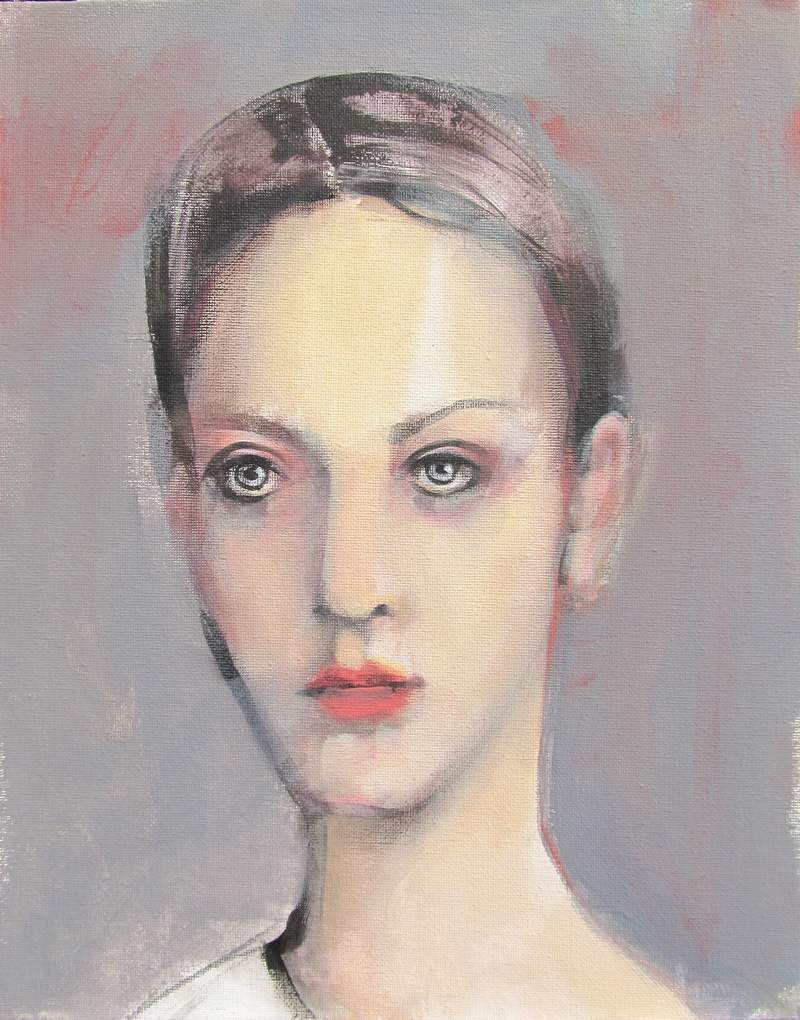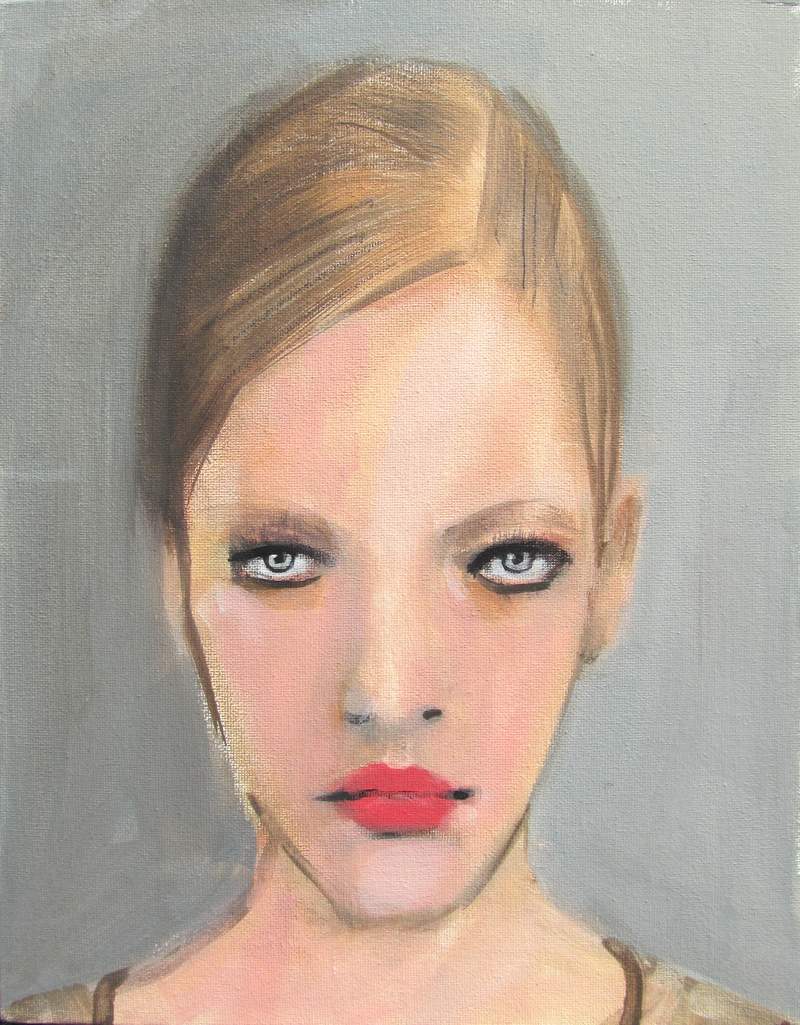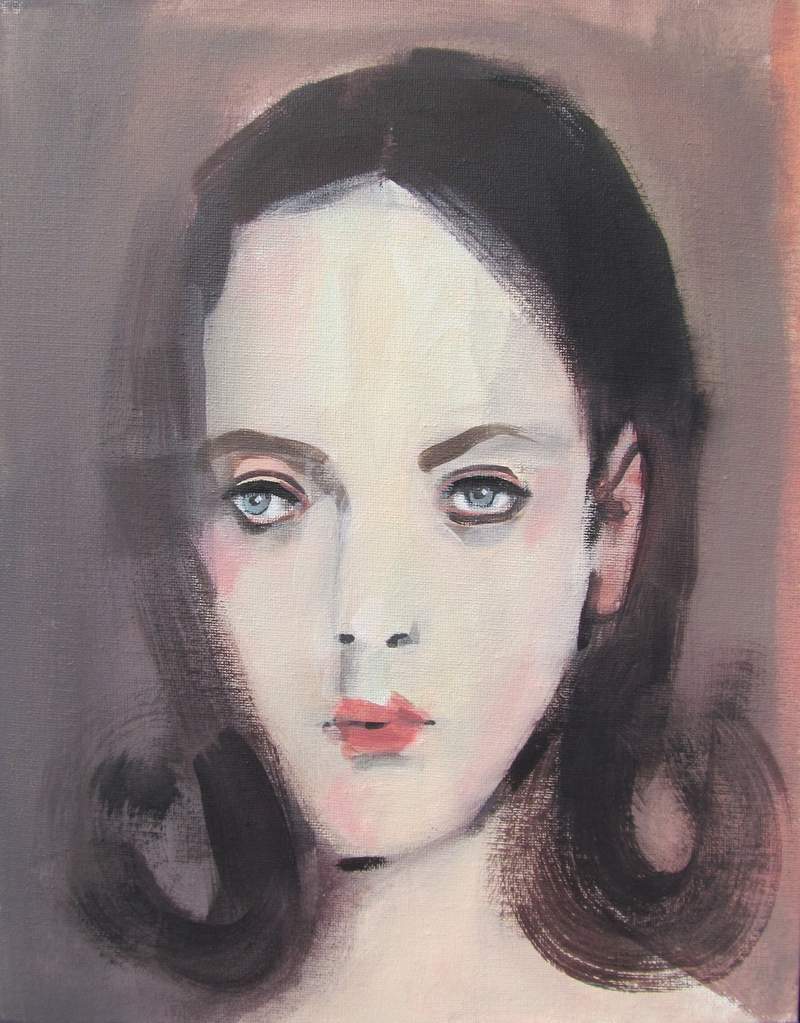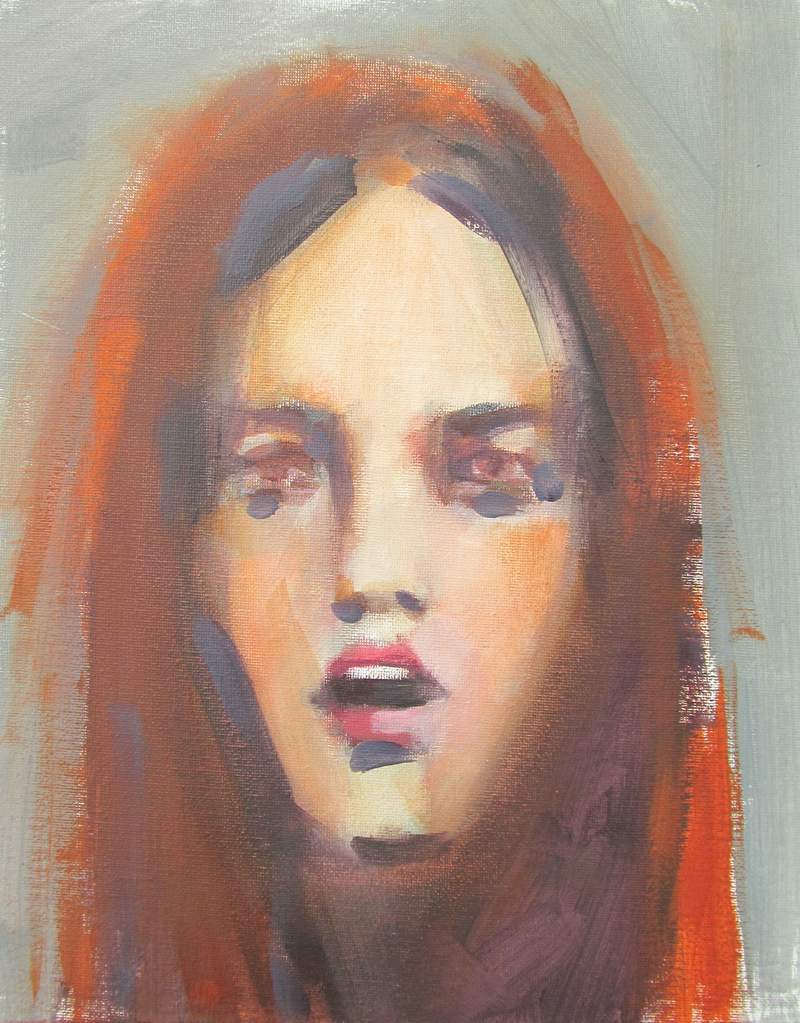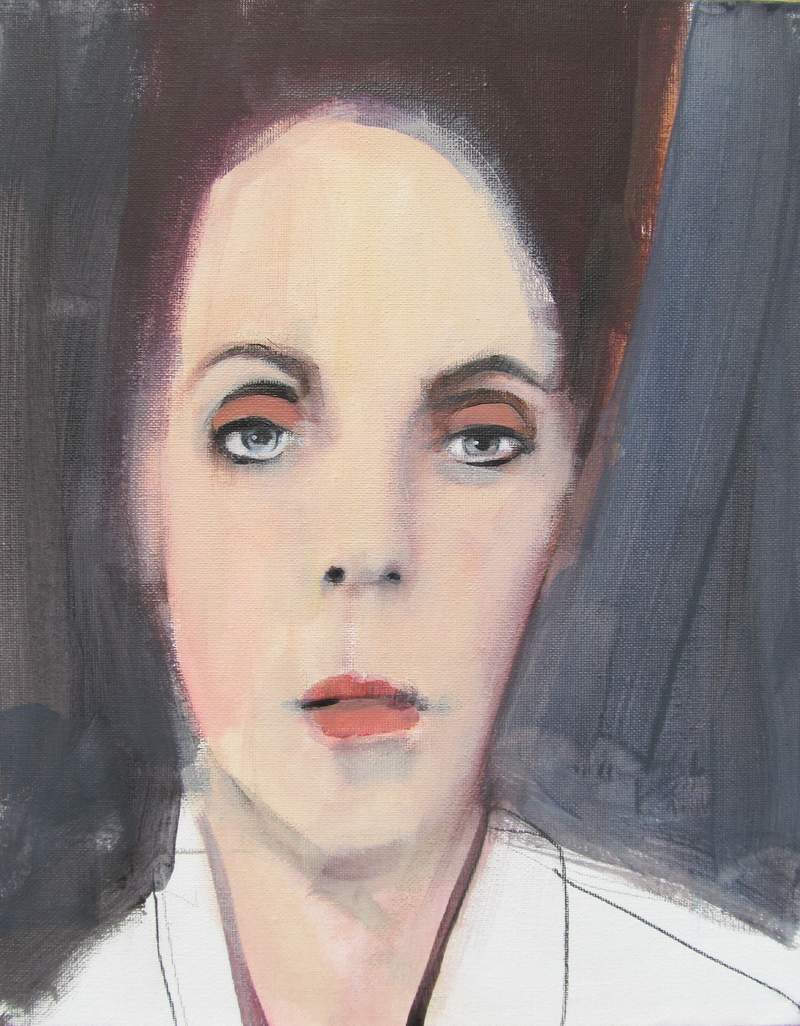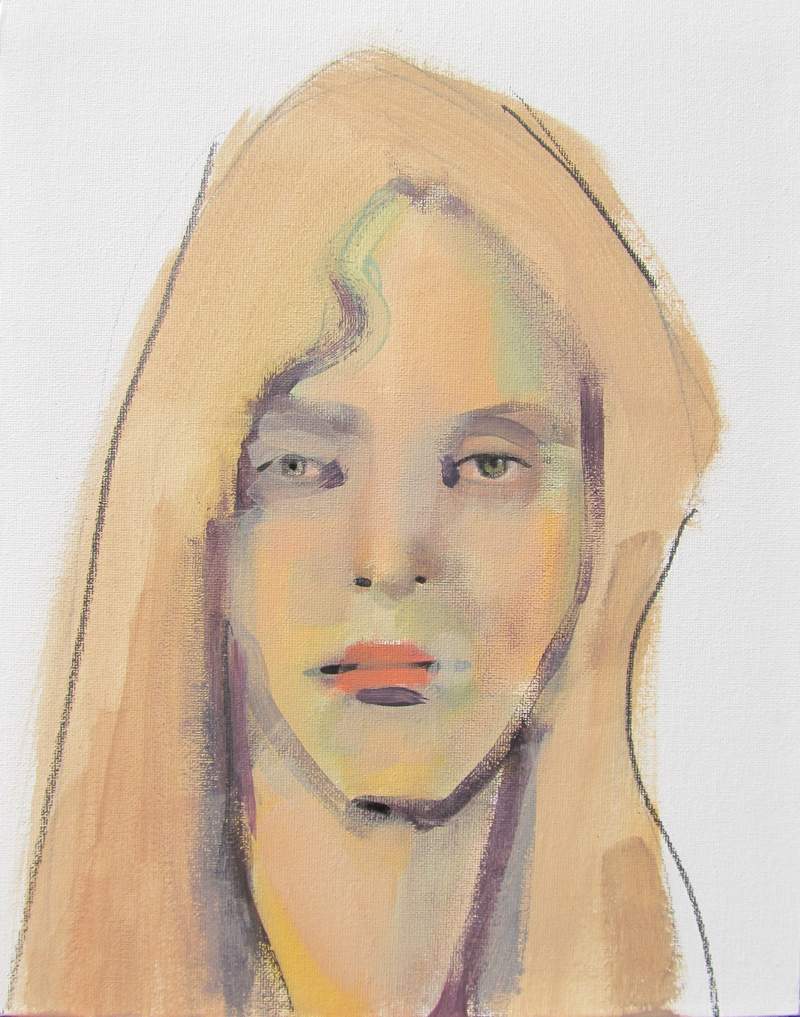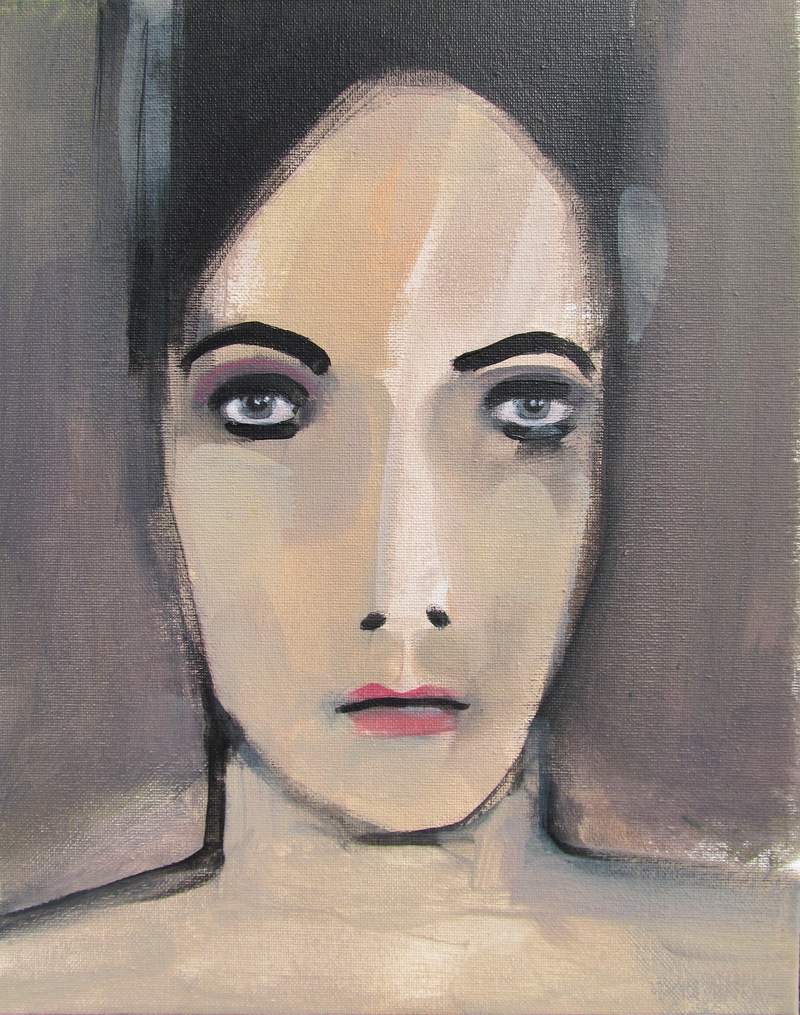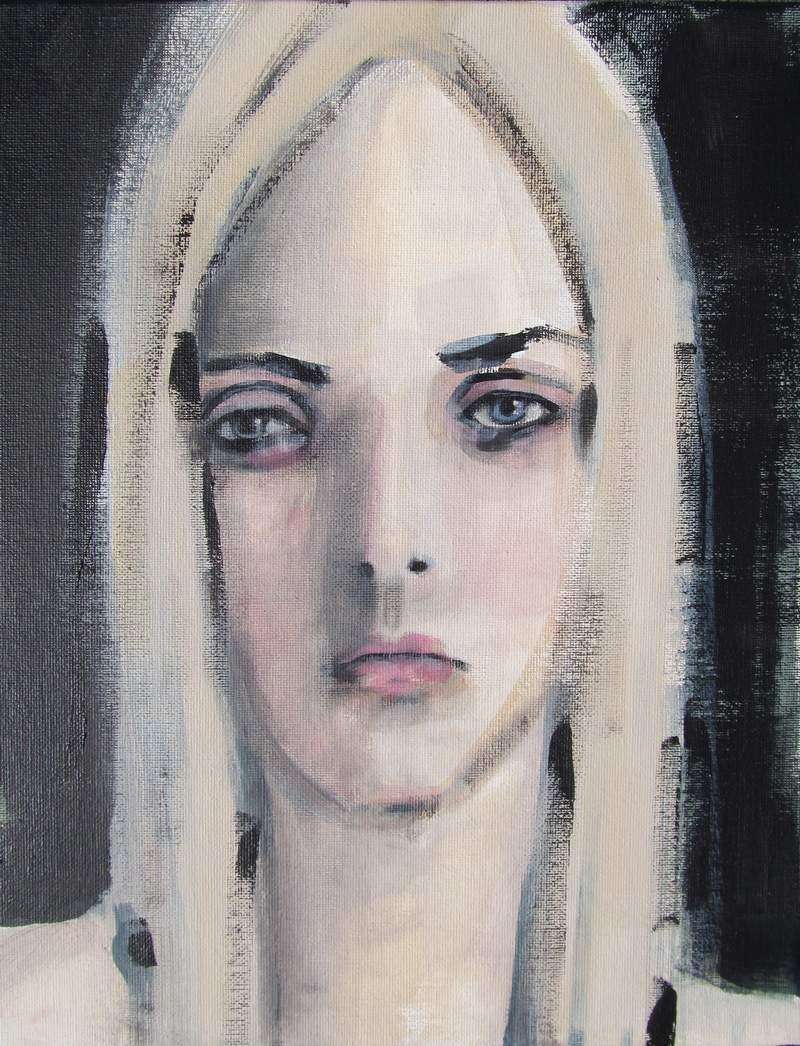
An interview with Radio Gulp in Argentina, January 19, 2024
Hello Jean, here I send you the questions so that you can answer them in writing. I’m going to post a note on the radio page. Extend yourself as much as you can since your testimony is very valuable! All my admiration!
1)- I would like you to tell me where you were born and how do you think the place where you grew up may have influenced the vision of art and life itself that you would later develop through music, painting and writing?
2)- Were there artists in your family? How did you connect intuitively with music or other expressive media? Did you consider yourself a different girl? When did you realize this?
I was born on the west coast of Canada, in Vancouver, in 1959. I grew up in a mid century modern house with a mountain view. My parents were both painters. My mom was an art school graduate and my dad was an ad agency art director who quit that job to paint full time. It was the 1960s and they both painted abstracts as well as landscapes and still life subjects. My dad was a big fan of my mother’s paintings and praised her color sense, bold compositions, techniques. Everything! Similarly, she very vocally enjoyed his work so there was a lot of talking about paintings while they looked at them together. I was there, witnessing it all, soaking it up, but they weren’t trying to teach me specifically. They listened to a lot of jazz and enjoyed the aesthetic qualities of the things in the house, which had nothing to do with opulence and status, but were more about good design. They both grew up in the depression era, so they were frugal. My dad grew up quite poor and, by comparison, my mom’s family was regarded as much better off, but, her father co-owned a small printing shop with two other men, so it wasn’t like she grew up wealthy, it’s just that they had an actual house and my dad’s family moved around to stay with various relatives when they couldn’t pay rent. They lived in store-fronts with newspaper over the windows and other unconventional places.
The impression I’m trying to present is one of not having a typical situation which made it more difficult to know where we were at in terms of a specific class, but certainly I had all the things a kid could want. Ice skates, bikes, toys, clothes as needed, but it was under the general sense of being frugal.



Many things weren’t spoken about in those days. Kids kind of raised themselves, going home for meals and TV. I didn’t know how my parents voted, for instance. I think they wanted it private because we lived in a moderate area as opposed to conservative or more left-leaning. With the distinction between my parents’ backgrounds I wondered if they voted differently, but many years later, I guess I finally asked and they were surprised that I didn’t know they voted for the left-leaning party. To me, that’s a strange thing not to know.
It was probably very helpful to me to see my dad in self-employment mode, noting a subtle change how money was regarded. We switched from our usual department store to a bargain store that had a funny smell. He took on quite a few commercial art jobs, what would now be called graphic design, to pay the bills. So obviously painting was not bringing in enough, but I didn’t notice that it impacted the quality of life, which is maybe what was different than other families where enjoyment was more connected to income and what could be afforded.
I remember every year he made his own very basic calendar. I loved his bold handwriting and the way he added energy to this simple project. It wasn’t because he couldn’t afford a regular calendar. In fact, various companies handed them out for free. He wanted to make and use his own.
The main thing going on in our house was painting and talking about painting. There was complete reverence any time one of my parents uttered the phrase, “I’m painting!” I know I’ve said it to people as an adult, somehow expecting them to have the same reaction, which is ridiculous. As a kid, that phrase was the equivalent of saying I am engaged in the highest form of activity in the world and while I’m painting no one should consider interrupting me for any reason.
Art created intensity that had nothing to do with money and I think that stuck with me, how a life could be exciting and passionate in ways that weren’t dependent on paying for excitement. It could be generated within oneself and with collaborators if you didn’t allow other people to diminish that art making. A couple of colors and a few lines could generate a lot of commentary and enthusiasm. It was almost like a high. A self-induced euphoria. As a kid, this happened over and over again, and I was part of it. Experiencing and understanding which ways of doing things resulted in the most excitement is a great way to learn, but being exposed to this environment without a defining context of how it compared to what other families were doing, may have put me at a disadvantage as a young adult. How other people structured their lives seemed a bit depressing, yet they were normal and on one path or another that made sense on paper. I was more interested in creating and sustaining excitement within some form of collaborative simplicity.
I went to art school right after high school and then quit in the middle of the second year because I wasn’t getting what I wanted out of it. The other students came from all over the province with way more conventional backgrounds than mine, and the teachers seemed to be foisting information on them in a way that I felt offended by considering how I had gotten to where I was in my exposure to art. It was extremely dreary and very forced feeling.
At some point along the way, my dad gave me a piece of advice that stuck with me. “Protect your creativity.” Being in art school was threatening my creativity and I left.
Meeting David and finding out that he played music eventually inspired me to write some lyrics and introduce the idea of me singing with his electric guitar.
3)- This year marks 40 years since the formation of Mecca Normal and 38 years since the release of their debut album which contains the cult classic “I walk alone”. With David Lester you were colleagues on a newspaper. I would like you to tell me how it happened that from writing you went on to form a band in minimal format (guitar and voice)? What albums and what groups encouraged you to take that leap?
David Lester and I met at a community newspaper where we both worked in the very small production department. It was basically just us two and our boss who we got along with in a friendly way. Back in the early 80s, newspapers were made by cutting and pasting the components together to be photographically printed from. I’d just returned from a 6 month trip around Europe living in a VW van, looking at as much art as I could in all the museums. I was into rock and new wave. I also had a few jazz albums. David had been in bands and had gone to a lot of bigger rock concerts and local punk shows. Every week when we finished sending the newspaper to the printer, a group of us would go out for drinks, then some of us would carry on to catch a band at a small club. Music at the local level, finding out there was a scene, became interested and through David, I saw how things worked.
David had lived in London for a while during the punk era, so he shared a lot of music from that time with me, of which my favorites would be the Raincoats, the Slits, Au Pairs, X-Ray Spex, CRASS, Poison Girls as well as the Sex Pistols, PiL, Stiff Little Fingers.
4)-Do you remember how the independent scene was made up in Canada during the first half of the eighties? In which places and with which bands did they usually play and share the stage?
Because Vancouver is very close to the US border, Mecca Normal tended to go south to Seattle and then down to LA, playing maybe eight cities and towns. We also did a lot of college radio interviews that we set up in advance because we had a lot of things we wanted to say about grass roots organizing, feminism, poverty and housing rights as opposed to wanting to simply promote our albums. This turned out to be a great way to meet people at the shows who were interested in the same things.
After putting out our first LP in early 1986, we met Calvin Johnson of K Records at our Olympia, Washington show. He was very interested in us and later offered to put out a single and then several albums. Olympia became our second home in a way. We recorded there, stayed for various lengths of times and made friends in that scene.
We didn’t tour that much in Canada because it’s got a much smaller population and the distances are so far between viable cities. I’m the only driver in the band. But mostly, it’s because we found a group of people that really liked what we were doing and we became part of that scene.

Mecca Normal photo by Pat Blashill for the Village Voice, 1990

Mecca Normal photo by Snorkel, Vera Project, Holland, 1995
5)-How do you deal with this reality of being a cult band and at the same time an unavoidable reference for many girl bands that emerged later and raised the flag of feminism and women’s empowerment?
Being active and involved during the start of Riot Grrrl was interesting because we knew the co-founders of the movement and we knew they’d been inspired by Mecca Normal in a number of ways. I used to talk a lot between songs from the stage and say that women should start bands with their women friends. Our songs had feminist lyrics and additionally, the format of the band as a man and woman working together without other instruments inspired non-traditional bands.
I’ve always really appreciated that Kathleen Hanna of Bikini Kill has included Mecca Normal when she talks about influences. It keeps us in the conversation, but it also shows a generosity that inspires a better way of being. Rather than pushing aside those that came before, I think talking about influences is important to women who are considering starting bands. It shows how it works and that there is a sort of reverence and inclusion as opposed to more competitive mentalities like winning and excluding. To me, doing that is political in its very nature. To make room for smaller bands that were important to her and other people in an earlier time. She’s also validating that our goal of changing the world happened. Including us as a reference point shows that the world can change for the better.
In terms of being a cult band, it doesn’t feel like there’s anything to deal with in terms of how people regard Mecca Normal. I don’t think the people who like us are into celebrity culture. I get the impression our fans have more a realistic understanding of what it takes to maintain a band for all these years. They probably think about that and empathize with the various twists and turns we’ve experienced. They understand what motivates us and something about that and the sounds that we make resonate with them.
David and I are more likely to discourage any sort of assigning of status. We became friends with a lot of our early fans back when it seemed like we had a lot of librarians and people who wore glasses in our audiences. It always seemed to be a bit of a nerd fest. We met quite a few scientists and academics. We are a small enough band that we can meet people in the audience at shows. We do our own merch sales and meet people that way. Being accessible discourages weird fan activity.
6)-Do you remember the first concert Mecca Normal performed outside the country? Tell me a little more about that and how they gained more visibility over time?
Mecca Normal’s first shows outside of Canada were in 1986 on a tour from Vancouver to LA called the Black Wedge which we’d named after England’s Red Wedge which included Billy Bragg and some other socialist types. The “Black” in our name referred to anti-authoritarian perspectives.
David’s brother Ken Lester was D.O.A.’s manager at the time, so he relied on some of those hardcore punk connections to book the shows, but we were a group of minimalist bands and poets out to smash capitalism and sexism. D.O.A. loaned us their old school bus for this tour and I can recall having no idea what shows would be like in the US. It was kind of scary because I’d been to plenty of punk shows in Vancouver which at one time had a decent scene, but it was impossible to guess what kind of interest this strange bill of poetry and guitars would get.
We had great conversations along the way, stayed with some interesting people, played our shows to fairly small audiences, did some college radio interviews, and I didn’t want it to end! While Ken had booked that tour, David and I booked a similar tour in Canada the next summer with some of the same performers and some new ones. It was all very intense because mostly people didn’t know each other on either tour, so we were all thrown in together in this old school bus, hearing each other’s material for the first time at the first show.
We weren’t exactly kids at this point either. We were in our mid-20s. Some of the others involved were in their 30s. Ken had been a 1960s radical in the Yippie movement, which was a youth-oriented counter-cultural offshoot of the free speech and anti-war movements, so, by extension, he brought that beat poetry element from an authentic place. It was a lot to take in on the road, considering we all had different perspectives and political stances, which were also the focus of the material we were performing. There was a thread of anti-authoritarianism that ran through the Black Wedge tours.
It wasn’t any kind of plan, but we covered a lot of ground for various reasons. The Black Wedge tours were unrelated to the K Records in Olympia scene after which we did about 6 tours in Europe organized by a fan who had never done any tour booking previously, but went on to book a lot of other bands. Then I went to live in New Zealand where I learned a lot about their DIY scene and 4-track recording. We didn’t take a formulaic approach and grow the band in a traditional way. We just kept having interesting experiences meeting and working with new people from different circles.


Jean Smith performing for a captive audience on a ferry crossing a lake in BC on the Black Wedge tour 1987. At the bottom, David Lester taking a photo.
7)- Mecca Normal is a band that is characterized by being different from the rest, you have an extremely expressive and peculiar voice. Does being different have its price? In this case, what would be the cost to pay (if there is any) for escaping or not using certain artistic canons and what would be its benefit?
The benefit of not essentially creating a version of existing an artistic canon is that moving along an idiosyncratic course can be utterly thrilling. When something good happens it feels like a bigger success when it isn’t predictable. Starting our unusual band connected us with people who also felt things could happen in other ways than simply repeating what already existed. Not just in music, but in culture and society in general, between men and women, in the economy, in challenging oppressive structures. When you do something authentically different and stick with it because it represents and reflects a better world for more people, you feel every failure and success more acutely, I think.
If there’s a price to pay, it’s not being regarded as one of whatever gang is holding court at any given time. That might be hard to translate. It might be easier to function within a known niche that brings everyone up as its popularity increases, but I think we have an aversion to being enough like anyone else that our popularity could be hinged to any trend. In a way, being associated with Riot Grrrl when we’re not Riot Grrrls is close enough proximity to a specific niche. We were a full 10 years older than the oldest Riot Grrrls and we’d been making music for almost 10 yeas at that point. Overall, it’s been helpful in adding context and bringing new listeners, but I have wondered what would have happened if we weren’t mainly defined as an inspiration to Riot Grrrl co-founders. Would we just be out there floating along on our own or would we be described as political punk or some other term? Or perhaps we’re not really known in this way. Maybe we are spread out across various scenes, known differently by each person who knows us. That actually seems more interesting.
The pandemic halted our activities right at the point when we were rehearsing to open a couple of Bikini Kill shows. I had already been focused on selling my paintings on FaceBook for a few years, but two major mainstream media events sent my sales into the stratosphere. In a way, the painting is an extension of so much of Mecca Normal in terms of DIY and access for people who don’t have a lot of money. To me, the $100 USD price for a painting is like Fugazi’s $5 ticket.
8)- How was the experience of starting recording in Smarten Up! the label you created with David in 1985, to be signed in 1991 by Matador Records with whom they released albums such as Water Cuts My Hands, Sitting On Snaps, The Eagle & The Poodle and Who Shot Elvis? Were there gains and losses in this change? In terms of recognition and creative freedom I mean…
Our record label name came from of my mid-80s fanzine “Smarten UP!” which was subtitled “A How to Change the World Publication”. It’s interesting now, all these years later, that changing the world is still a factor in what I do. It’s an open enough concept that we’ve defined various ways including changing the world with more women in bands, which, in part, inspired the Riot Grrrl movement, and my current artist residency project for progressive social change.

My mid-1980s zine was a How to Change the World publication.
No one has ever expressed too much interest in reducing our creative freedom. Being on Matador after K Records felt like we were getting more exposure because Matador had more staff and a bigger budget for press, advertising and art. I think it was a reasonable fit for us because we were not looking for a label with bands similar to ours. We typically liked opening spots on larger bills with better known bands so we could perform in front of people who had never heard of us. Whether they liked us or not wasn’t essentially part of the equation. The headliners liked the idea of exposing their fans to bands they liked, bands that weren’t just like them. I’m thinking of Fugazi here. We played with them in Seattle, Vancouver, Olympia and New York and I would say their audiences didn’t like us very much, but as the years went by, we’ve actually heard from some of those young guys at those shows who have contacted us to say we opened their eyes to other kinds of music and ways of thinking and they were sorry they threw that shoe at us or whatever. This is more what we’re about than being liked.
9)- With which band’s album do you feel best represented from the first to the last they recorded and why?
“Sitting on Snaps” was partially written and recorded in different locations while on tour. It’s an anomaly in that way. There are some experimental songs and some added musicians on a couple of songs. I created and performed one song on my own in the studio. We were in Europe, and both the east and west coasts with some New Zealand influence. For these reasons, it feels like an album that represents us functioning in less than ideal conditions, working together under duress, using the energy and excitement of the live shows to write and record between performances. It was our seventh album, ten years after the first album. We were evolving into new territory musically, in terms of interests, inspiration and in our personal lives.
10)- You had your solo experience this year [2000] on the Kill Rock Stars label, recording a more experimental and chaotic album. How did you go through this process?
My solo album came out in 2000 on Kill Rock Stars. I recorded it in Olympia with Pat Maley who recorded some Mecca Normal albums and was always super supportive, so I felt I could be fully creative without wondering if my engineer would have context and patience. We had a rapport. In the end, I mixed a lot of it myself, alone at the studio. That was a thrill. I played piano, sax, both electric and acoustic guitar with limited percussion and some vocals. I played some solo shows when it came out. In fact, godspeed you black emperor! asked me to open for them on a west coast tour which was great, but I asked if Mecca Normal could also play and that was fine with them. Everything is always more fun if David is involved.
It’s funny with that album. I don’t think it was what many people expected or wanted from me, but I was very happy with it and every now and then someone contacts me about it. A few years ago, Chris Brokaw (guitar in both Come and Codeine) was in Tokyo at a club where a DJ was playing a sax and piano track from it and Chris went over to ask who it was because he liked it. He’d already bought some of my paintings from me at that point. It’s those kind of things that are meaningful. The work gets done, it makes its way through the world, and there are bits of evidence you hear about, whether it’s from someone at a show, a review or some club in Japan years later. These compounding experiences form a unique narrative that is very different than selling hundreds of thousands of records and having people idolize you because they think you’re something you yourself don’t exactly recognize.
Having experienced a heightened level of attention with my painting, I don’t think I would have wanted that intensity for Mecca Normal. Being here alone in this room it was much easier to navigate the influx of demand for paintings than it would have been for Mecca Normal to experience fame, however weird that sounds, on tour. We played some big shows from time to time, but our role was very different than the headliners.
11)- In 1993 you published your first book I can hear me fines, then. The Ghost Of understanding: a novel and Family Swan and other songs in 2001… How do you organize yourself to develop yourself in so many disciplines and ensure that your head doesn’t explode? Is there a correlation between music and writing or do both provide you with different nutrition?
Spread out over all these years, it is actually less claustrophobic to have had different amounts of time for different disciplines. Rather than figuring out every detail in advance, we have typically started what we want to do and addressed issues as necessary, as they came up. We were fortunate to have low overhead as a band of two traveling by car instead of vans with tons of equipment. With only two personalities in play, it made everything easier.
As far as the specific areas of focus, I’d say it went from music to writing and then to painting. For years the writing and the music were at the same time until I started writing my third and fourth novels which have yet to be published. The lyrics for Mecca Normal songs often came right out of the novels around the time of “The Family Swan” and “Empathy for the Evil” (mid-2000s), whereas, during the time of “I Can Hear Me Fine” I turned parts of the novel into songs.
Anyway, there was plenty of time for all of this action. My focus switched based on interest, which is not something bands that make it big can always do. If you’re fortunate enough to be selling a lot of records and making money, you have people relying on you. Management, the label, roadies etc. All these people need the artist to continue making art in the same way that it’s already selling. It may seem fantastic to be in that position, but there’s a lot of pressure there. There’s far more freedom to evolve in underground and DIY scenes where sales don’t define your creative output.
My first novel, “I Can Hear Me Fine”, has a sort of band on tour energy as it jumps through different locations with somewhat experimental plot lines. The kind of thinking the main character exhibits is quite fluid in the way that life on the road, on tour, results in a staggered continuum, punctuated by shows. It almost has the feel of an album of songs, some of which repeat various themes.
David has always been very supportive of my writing as well as my singing and painting. He’s always been such a great friend and collaborator. He’s extremely hard working and disciplined in his art practice. I’m pretty sure it was David who said, “Take something you care about and make it your life.” If it wasn’t him, it certainly reflects his position on living an art-filled existence.
In 1993, he created his small press imprint “Get to the Point” to publish my first novel. It was really exciting to include it at our merch table on tour. Such a thrill to see people standing there reading sections of it, buying it, talking about it. That project fortified the concept that we weren’t just a band. It also elevated me as a writer and the author of our lyrics. We recognized that our fans were also interested in literature. Years later, when we added art exhibits to our tours it was the same. People interested in our music were also interested in our art, some of which had specific political content.

My first novel, published by David Lester’s imprint “Get to the Point” 1993
12)- In addition to all this, you are a painter and it could be said that one of your strong points is the self-portrait. Why did you choose this genre? What do you see attractive about him? Do you have painters that you consider references?

Self-portrait by Jean Smith (11 x 17″ watercolour on paper, circa 1973, age 13)

Self-portrait by Jean Smith (11 x 17″ watercolour on paper, circa circa 1974, age 14)
I began painting self-portraits when I was a young teenager in the mid-70s. In a way, my face was what I had to work with. I didn’t have to consider whether another person liked how I painted them. I was a willing subject open to interpretation. I painted my face regularly into my 20s and then made a point to do one self-portrait every year during a time when I painted more landscapes than anything, until 2016 when I decided to sell a daily painting on Facebook for $100 USD.
I intended to paint and sell landscapes, but I used a painting of a woman in a hat to post the announcement for my project. Another painter wanted to buy that painting and then there were maybe 6 other people interested, one saying they wanted whatever I painted next. So I realized that people were interested in portraits even if they didn’t know the subject or even if the subject wasn’t an actual person, but more about emotion, color, composition and technique.
13)- How did you manage to start marketing your paintings, something that could be more difficult than selling a record or a book…because it is a smaller or more closed circuit. Visual artists often have a more daunting or complicated outlook… Do you see it this way?
Posting my paintings on FaceBook meant I was able to get them in front of many of the people we’d met and knew through Mecca Normal connections. For the first few years I only sold about half of what I painted and posted, but then, in 2020, a woman I didn’t know started buying them up in groups until she’d purchased all 250 that were remaining. This started to increase demand as many people wished they’d bought them when they were easy to get. At that time, every painting sold immediately.
Then I got an email from a writer asking if I’d tell him my story for the New York Times Magazine. He’d been a music writer, so he knew Mecca Normal, and he’d bought a couple of paintings. By this time I’d been realizing that my apartment in Vancouver was in jeopardy and I was considering where I could move if I got evicted. It felt like I’d have to leave Vancouver and its high rents. My overarching plan was to have a place that had space for others to come and stay in the same way that we have been hosted over the years. I called the idea the Free Artist Residency for Progressive Social Change because it best describes the kind of people whose work inspires me. At that time, without enough to buy a decent place, I was looking at not very good buildings far far away, hoping I would eventually have enough to buy a decent place closer to Vancouver, to continue working with David.
I was super excited about the NYT’s article so I posted about it on FaceBook and immediately a producer from CBC Radio, Canada’s national network, contacted me asking if I’d do an interview on a well-known talk show. That was September of 2020, 6 months into the pandemic. There was just something about how I explained everything about the daily $100 USD paintings, the artist residency, and my desire to make good things happen. It was a perfect storm of potential and hope, and thousands of people went from their radio to FaceBook, found me and started trying to buy the daily paintings! I quickly began painting a larger size, ordered these new canvases, painted non-stop, and created a group to sell these 16 x 20s for $600 USD. They flew out the door. Then, months later, when the NYT story ran, I was totally flooded with emails, messages, people lining up on the daily painting thread, so I started another group called 3 or More Large and asked people to say which of my themes they wanted. Pioneer of Aviation, Astronaut, The Hat, Bathing Cap, Ruff Collar etc. So I had a thread with hundreds of people listing what they wanted. I contacted them and showed them options. That worked pretty well, but it was time-consuming to wait for them to get back to me. There was such huge demand that I started posting sets of 6 large and I had 20 people that wanted that. I’d have maybe 6 similar sets ready to go (36 paintings a week) and I’d contact the other people on the list and show them those additional sets. Needless to say I was painting a lot. Selling, packaging and shipping crazy amounts. I’ve sold well over 4000 paintings since the CBC radio interview aired.
I was able to keep the energy up for a couple of years, but the economy and the nature of demand has greatly reduced sales, but I almost have enough to buy a decent place for the residency in a small city not too far from Vancouver. It would be better to be able to stay in Vancouver, but it’s one of the most expensive places in the world to buy property.
I have had a few other articles since, but none of them brought in additional sales. There was something unique about that time and the way people were spending money on art. I wasn’t alone. Other artists experienced increased sales, but my situation was exceptional. People were trapped at home and maybe the hopeful nature of my project made them feel involved in a way that was helpful to them. Which is an intentional, repeated thread through all our work.
Follow me on FaceBook if you want to see how it all turns out with the artist residency.

“The Hat #139″ (11 x 14” acrylic on canvas panel)

“Pioneer of Aviation #103″ (11 x 14” acrylic on canvas panel)
14)- You have dedicated practically an entire life to art… What would you say to young people who are just beginning to develop their own view of the world?
It makes for a better lifetime experience to get involved in some form of art and expression. Making art can, at different times, feel like it’s the best thing about life. It alone can get you through to the next section of time. Just keep going. That’s the trick.
Thank you for your time Jean and for sharing your experiences with us!!







